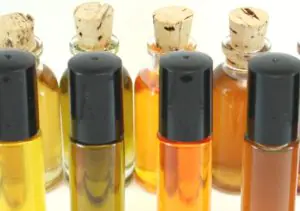
Have you already heard about the benefits of oils and tried it for yourself, but instead of clear, young, glowing skin, you ended up with enlarged pores, inflammation and acne?
You are not alone. Many people complain about this result. And all because one indicator is not taken into account - “comedogenicity”.
What is comedogenicity
This term comes from the word “comedone”. This is the name given to blackheads that spoil the complexion and appearance of the skin, and in advanced cases lead to the appearance of acne. They appear in both adolescents and adults - age does not matter here. To understand how blackheads arise, you need to get acquainted with the structure of the hair follicle.
Follicle is a depression on the surface of the epidermis within which hairs develop. In the lumen of the cavity, the sebaceous glands produce sebum, which lubricates the hair. When this duct becomes blocked, comedones form. If a favorable environment is created, they become inflamed and acne appears.
In adolescence, this is facilitated by increased production of sebum due to hormonal changes. In adults, in addition to disorders in the body, the problem is caused by incorrectly selected cosmetics, including vegetable oils.
Vitamins A and E can aggravate the condition of oily skin.
But not all oils are equally dangerous. The fact is that some of them are highly comedogenic, while others can be used to treat oily, inflamed skin.
Oils are 95% fatty acids, the presence of which explains why pores become clogged and sebaceous plugs form. Fatty acids are divided into three types - saturated, monounsaturated, polyunsaturated.
- Saturated fatty acids are thickeners, including in relation to sebum. But such substances are useful for dry, dehydrated skin, as they soften and prevent moisture evaporation.
- Oils with monounsaturated fatty acids are light, do not leave shine and penetrate into the deep layers of the skin, transporting beneficial substances there. It is believed that such products not only do not clog pores, but even dissolve sebaceous plugs, making the face cleaner.
- If polyunsaturated fatty acids predominate in the product, then they also penetrate well deep into the dermis, helping to maintain the fat barrier. But the disadvantage of these products is that they oxidize quickly and pose certain risks for oily skin.

Cosmetologists agreed that comedogenicity would be assessed using a five-point system. The table of comedogenicity of oils in Russian will tell you what score was assigned to a particular product.
These figures may fluctuate as they are affected by the degree of purification of the product. Thus, as a result of refining, the risk is reduced.
Non-comedogenic facial oils
These are oils that are assigned 0-1 points on the scale mentioned above. They are liquid, flowing, light and suitable for any skin type, including oily and problem skin. The following are non-comedogenic facial oils, the list also contains a score.
| View | Points |
| Shi | |
| Safflower | |
| Sunflower (refined/unrefined) | 0/1 |
| Mango | |
| Hemp | |
| Argan | |
| Rosehip | 1 |
| Black cumin | 1 |
| Sea buckthorn | 1 |
| Neem (margosa) | 1 |
| Refined sesame | 1 |
| Castor | 1 |
| Pomegranate seeds | 1 |
Moderate and low comedogenicity of oils: table
These oils manifest themselves in different ways, and their effect on oily skin is unpredictable. You can find out the effect only by trying the product. On the scale they are assigned 2-3 points.
| Type of oil | Point |
| Pumpkin | 2 |
| Tamanu | 2 |
| Sandalwood | 2 |
| Peach pit (peach) | 2 |
| Almond | 2 |
| Hazelnut (hazelnut) | 2 |
| Avocado pits | 2 |
| Camphornoye | 2 |
| Jojoba (liquid wax from nuts) | 2 |
| Grape seeds | 2 |
| Baobab seeds | 2 |
| Peanut | 2 |
| Apricot kernel | 2 |
| Cotton | 3 |
| Soy | 3 |
| Olive | 3 |
| Macadami | 3 |
| Unrefined sesame | 3 |
| Corn | 3 |
Highly comedogenic products
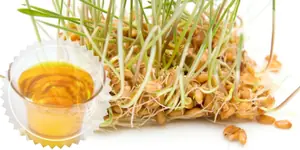
It turns out that the popular wheat germ oil is one of the most dangerous for oily facial skin, as it clogs pores by 5 points!
| View | Point |
| Coconut | 4 |
| Cocoa | 4 |
| Linen | 4 |
| Palm | 4 |
| Wheat germ | 5 |
Other substances

When buying ready-made cosmetics or planning to prepare a cream at home, you should keep in mind that in addition to vegetable oils, other fats are also used.
They, in turn, can also worsen the condition of the skin, especially if it is oily and has acne.
| Drug name | Point |
| Petrolatum | |
| Ceresin wax | |
| Mineral | |
| Candelilla wax | 1 |
| Carnauba wax | 1 |
| Beeswax | 2 |
| Emulsion wax | 2 |
| Shark liver oil | 3 |
| Lanolin | 3 |
| Mink oil | 3 |
Studies have shown that blackheads on the face also appear from the following components:

- isopryl palmate;
- isopryl isostearate;
- sodium lauryl sulfate;
- hexadecyl alcohol;
- isostearyl neopentanoate;
- isopropyl myristate;
- isocetyl stearate;
- butyl stearate;
- Decyloleate.
What benefits oily skin?
The following oils stabilize the condition of oily skin, eliminate inflammation and improve complexion:
- from hazelnut kernels - reduces pore size, smoothes, regenerates;
- grape seeds - moisturizes, makes pores less noticeable;
- jojoba - protects from ultraviolet radiation, retains moisture, nourishes;
- apricot kernels - restores elasticity, softens, moisturizes;
- baobab - clears acne, preserves turgor and youth;
- almond - cleanses pores, brightens redness.
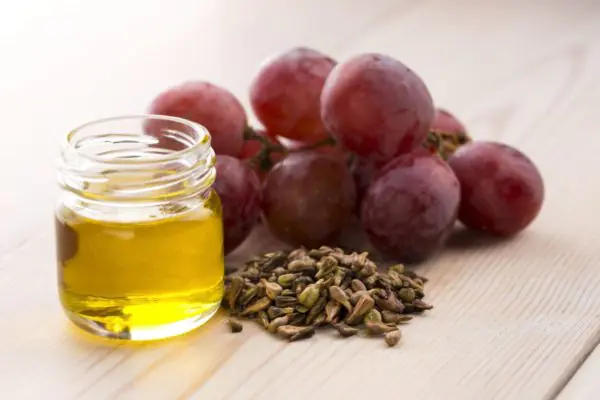
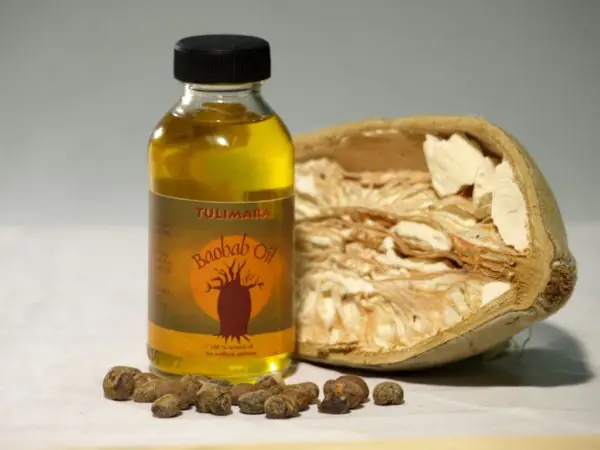
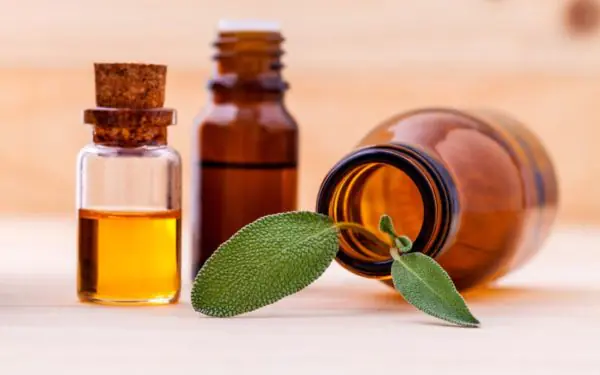
Remember: it is impossible to replace skin care with oils alone, especially in adulthood.
And finally. The human body has its own characteristics. Therefore, we can only talk about comedogenicity as a trend. People may have different reactions to the same substance. Therefore, you should try the products carefully, even if the manufacturer promises that shea butter is of a low level of comedogenicity, especially if the quality of the product is low.
In addition, most products were tested on rabbit ears, and cosmetics do not always behave the same way on human skin. The problem also arises with an excess of fatty acids.
Some fats are necessary for the skin and can improve its condition even in advanced cases, since these substances are not synthesized by the body on its own. Therefore, it is a mistake to think that for oily skin, fat-free cosmetics are recommended; the composition should contain oils, but in the correct ratio. For oily and combination skin types, it is recommended to avoid using pure oils.
Useful video
Selecting facial oil.
Oils are one of the most popular components of cosmetics, regardless of whether it is homemade or industrial. Their demand is explained very simply. Oils are rich in fatty acids and vitamins, which are so necessary to maintain youthful and beautiful skin. However, they also have a downside, less pleasant side. Many oils can provoke the appearance of comedones (white and blackheads).
In 1984, James Fulton (dermatologist, cosmetologist, plastic surgeon) conducted a study of a number of components widely used by the cosmetic industry (including oils) for comedogenicity. As a result, each substance received a rating from 0 to 5 points:
0 - does not clog pores,
1 - low comedogenicity,
2 - moderately low,
4 - quite high,
Over time, the research work begun by Fulton has been continued by other scientists, and the level of comedogenicity of most oils is now known. You can use this knowledge to your advantage by assessing the composition of products before purchasing them or by making cosmetics yourself that will suit your skin type.
When studying research data, do not forget that each of us is absolutely unique. It is quite possible that oils with a comedogenicity level of 0-1 will worsen your skin, and those with a level of 3 or even 5 will suit you perfectly. This fact should always be taken into account and focus primarily on your own experience, and not on someone else’s.
0 points
Listed here are oils that should not clog pores, but, on the contrary, help cleanse them.
- Watermelon
- Argan
- Goji
- Blackberries
- Hemp
- Poppy
- Mineral
- Sunflower
- Safflower
- Sacha Inchi
- Tomato
- Blueberries
- black currant
- Shi
1 point
Oils with safe comedogenicity. They can be used on oily and acne-prone skin.
2 points
Oils are still suitable for oily skin, but in limited quantities, but they are perfectly accepted by normal and other skin types. They are also suitable for treating acne scars.
- Apricot kernels
- Peanut
- Baobab
- Brazil nut
- Cherry pits
- Mustard
- Walnut
- Jojoba
- Green tea
- Pine nuts
- Cranberries
- Kukui
- Lanolin
- Almond
- borage
- Olive
- Pecan
- Peach
- Sandalwood
- Plum pits
- Rice bran
- Tamanu
- Pumpkin
- Black cumin
3 points
This level of comedogenicity of oils allows them to be used on dry skin and those areas of the face and body that are not prone to comedones (for example, eyelids, elbows, knees, heels).
- Avocado
- Sesame
- Macadamia
- Marula
- Carrot
- Mink
- papayas
- Evening primrose
- Chia seeds
- Cotton
4 points
Oils are nutritious and healthy, but most act as provocateurs on the skin: they increase sebum secretion and interfere with skin respiration, thereby contributing to clogged pores. It is best to use them on dry areas of the body and hair, take them orally.
5 points
Extremely healthy and at the same time comedogenic oil. Add only small amounts to mixtures and apply to those areas of the skin that are not prone to comedones.
Many of us love to take care of our faces using various oils. And this is not surprising, because after using the oil, the skin seems soft and moisturized, velvety and smooth.
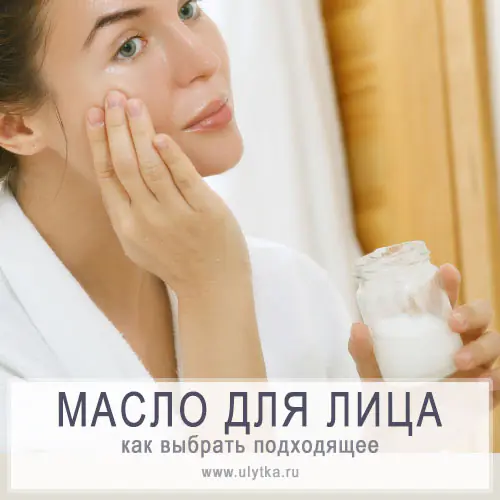
And here many people have a question: are creams needed at all, because oil takes excellent care of the skin, even better than any expensive cream.
In addition, the oil is a completely natural product that does not contain any preservatives or other chemicals, so it will not cause any harm to the skin.
But is this so and what is the harm of oil to the skin? Which facial oil to choose so as not to harm the skin?
How oils can harm your skin
It is not recommended to use oil for skin care for a long time. Otherwise you risk:
The fact is that with prolonged use of oil, it dissolves the natural lipid (fat) barrier of the skin, as a result of which your skin “dries out”.
The result is dry and very flaky skin.
And as you know, this will lead to clogged and enlarged pores and the appearance of acne.
Each oil has the property of being comedogenic (read about it below). If you choose the wrong oil for your skin and use it for a long time, acne and clogged pores are inevitable.

Can I use oil instead of cream?
It is not recommended to constantly use the oil in its pure form.
It is better to add it to creams and masks - this will bring much more benefits to the skin than using it in its pure form.
If you still want to use the oil in its pure form, follow these three rules in order not to harm your skin.
Rules for applying oil to the skin:
Use the oil in its pure form only as an emergency aid, for a course of 2-3 weeks, no more.
The oil should only be applied to damp skin.
For dry skin take 3-4 drops, for normal skin - 2-3 drops, for oily skin 1-2.
Apply to damp skin with your fingers along massage lines.
15-20 minutes after application, the skin should be blotted with a napkin to remove any remaining oil. After this, apply moisturizer to your skin.
To care for the skin around the eyes, apply the oil no later than 2 hours before bedtime. Otherwise, in the morning you will wake up with large swelling under your eyes.
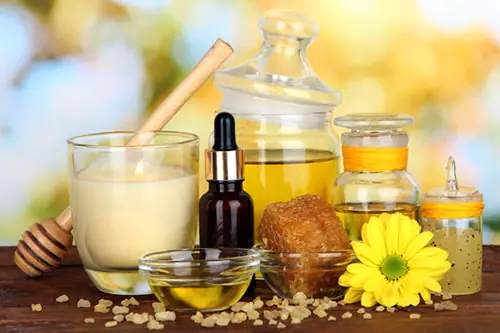
What types of oils are there?
The fact is that there are oils that under no circumstances should be used on their own, but only as an additive to the main one.
Therefore, if you want to use oil in your facial skin care, you should know that there are three types of oils:
They are obtained from various parts of plants.
In their pure form, essential oils are used only in aromatherapy, with the exception of two (applied pointwise) - tea tree oil and lavender.
All others need to be combined with the base ones (for 3 teaspoons of base, 3 drops of essential).
In combination with base fatty oil, essential oil enhances its beneficial properties.
They contain a lot of different components (high concentration of vitamins), so they cannot be used in their pure form (raspberry seed oil, pomegranate seed oil, sea buckthorn oil...).
If you use them in their pure form for a long time, you will harm your skin.
Their composition is balanced for the skin and will not cause harm, even if used in its pure form (grape seed oil, coconut oil, cocoa butter, hazelnut oil...).
It is these oils that should be used as a base into which active and essential oils can be added for skin care.
Basic oils can be mixed with each other into various cocktails, while this is unacceptable for active oils.
Refined oils - those that have undergone maximum purification and no longer have either color or odor, have a long shelf life.
Unrefined oils They have their own natural smell and shade, a short shelf life (up to six months).
They are not recommended for use by people with allergies, thin sensitive skin, or pregnant women.
There is a myth that refined oil contains much less nutrients than unrefined oil. These oils differ very little in their chemical composition.
Therefore, it is safer to choose refined oils for skin care so as not to get an unpredictable allergic reaction. Especially if you have thin and sensitive skin.
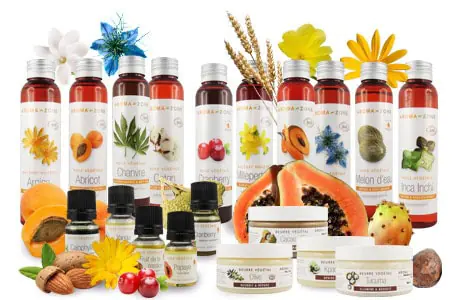
How to choose essential oil based on your skin type
- For dry skin:
- geranium, lavender, orange, tea tree, rosewood, neroli
- For oily skin:
- rosemary, lemon, mint, ginger, lavender, patchouli, ylang-ylang, tea tree
- For normal skin:
- lavender, lemon, geranium, rosemary, mint, jasmine, rose, neroli, ylang-ylang
- For combination skin:
- mint, geranium, lemon, rosemary, jasmine, tea tree, bergamot, orange, lavender.

How to choose fatty oil for skin
For fatty oils (active and base) in cosmetology there is such an indicator as comedogenicity.
The comedogenicity of an oil is the extent to which the oil can clog pores and cause acne.
Also, if there is a tendency to swelling, this oil will aggravate it.
The comedogenicity of an oil depends on its composition; in some oils it is very low, while in others it is high.
- Shea butter (karite)
- wheat germ oil
If you have oily or combination skin, highly comedogenic oils with a level of 4-5 points are contraindicated for you.
- Universal base oils for all skin types:
- jojoba, apricot kernels, grape seeds, hazelnuts, sesame seeds, sea buckthorn, peach kernels, almond.
- Ideal for oily skin are:
- grape seed oil, hazelnut oil, walnut oil, peach kernel oil, almond oil, apricot kernel oil.
- For combination skin:
- macadamia, almond, sea buckthorn, jojoba.
- Ideal for dry skin:
- macadamia, avocado, rose hips, peach kernels, apricot kernels, sesame seeds.
- If you have normal skin, your carrier oils are:
- jojoba, apricot kernels, peach kernels, almond, sesame.
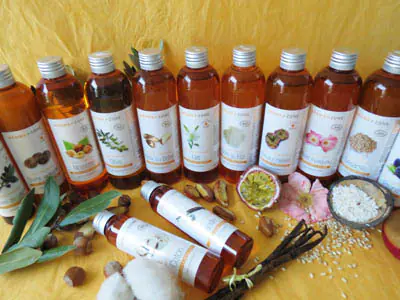
To prevent oils from going rancid, oxidizing and lasting longer, they are best stored in the refrigerator on a side shelf.
If the oil is liquid, the neck of the bottle must be wiped after use, as bacteria accumulate under the cap and cause the oil to deteriorate.
Which facial oil to choose so as not to harm the skin - 3 rules for applying oil: 1 comment
There are many articles and all with disagreement on the use of oils... and you don’t know who to believe..



